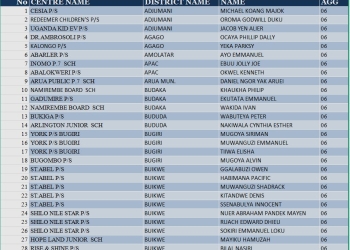
Geologists have confirmed that a new ocean is being created as the African continent is split in half. An international effort has revealed that a 35 miles long rift appeared in the Ethiopian deserts of the Far region in 2005 and is probably the start of a brand-new sea.
The recent study, published in the journal Geophysical Research Letters, combines seismic data from the rift formation to demonstrate that it is driven by processes similar to those at the ocean’s bottom. The tectonic plates of Africa and Arabia collide in the desert and have been gradually separating for about 30 million years. The same motion has also split the Red Sea, but this is only happening at a rate of a fraction of an inch per year.
Kenya Broadcasting Cooperation (KBC), reports that many have expressed shock at the prospect and possibility of a new ocean forming in Africa. According to Dr. Edwin Dindi of the Department of Geology in the Faculty of Science and Technology at the University of Nairobi, it is possible that indeed an ocean is forming along the eastern arm of the African Rift Valley.
“The Eastern arm of the Rift Valley is fairly active, this is seen in the many tremors that occur around it,” he says and adds, “it will, however, take a long time probably millions of years for such it to happen.
Geologists put Earth’s formation at 4.5 billion years ago. Followed by the formation of the continental crust 3.2 billion years ago., the continental shelf began forming when the melting rocks beneath the earth’s surface pushed through the columns onto the earth, forming the supercontinent.
Dindi in an interview at the Department of Geology says the tectonic plates are in a state of flux with some shifting against each other along fault zones, some falling beneath one another, while others crash against one another, tearing apart from each other at divergent plate boundaries. This motion led to the formation of the various continents as we know them today; Africa, South America, North America, Europe, Asia, and Australia.
According to Dindi, the continuous motion within the continental crust has also seen the formation of the East African Rift valley, which continues to be active and widening and could see the formation of a new ocean in Africa.
“But this will not happen immediately, it is something that will happen millions of years to come,” says Dindi and adds, “remember it has taken over 30 million years for the thickness around the rift valley to reduce from 40 kilometers to 35 kilometers, meaning that it will take many more years to shed off another 5 kilometers.”
Dindi observes that not all rift valleys form in the state of the current ones, they tend to fail like the one that had begun forming around Wajir in the North Eastern part of Kenya “but failed and the area was instead covered with sediments,” he says and adds, “today when you travel across Wajir you can only see the depression but not a rift valley.”
The East African Rift valley also known as the Afro-Arabian Rift Valley, is one of the most extensive rifts on Earth’s surface, extending from Jordan in southwestern Asia southward through eastern Africa to Mozambique.
The system is about 6,400 kilometers long and averages between 48 to 64 kilometers wide.




















